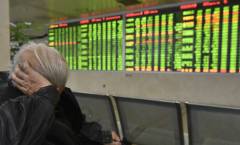The Overstretched Fuse Wire and China’s Stock Market Turmoil
China’s stock market is once again sending financial shock waves around the world, with trading suspended on Jan. 4 and 7 leading to capital market uncertainty. The country’s newly implemented “Circuit Breakers Mechanism” (CBM), a kind of trading curb introduced by the China Securities Regulatory Commission (CSRC), received much of the blame for the volatility. But what is a circuit breaker mechanism exactly? It can be thought of similarly as a fuse in any common household appliance. A fuse exists for the express purpose of protecting its user from the dangers associated with overcurrent, dangers that include short circuits, which can in turn lead to catastrophic fires without the protection of preventative resistors. Now take that real-life level of protection and apply it metaphorically to a financial market. The systematic risk associated with finance, such as shares plunges, are triggered by the prevailing fears of the investors. These fears in turn dry up market liquidity and paralyze trading. As part of a package program for China’s financial system reform, the CBM was designed to calm the country’s capital markets in extreme circumstances. The primary aspect of China’s CBM is that if the CSI 300 stock index falls by 5 percent, then trading is halted for 15 minutes–hence the term circuit breaker. (Also, the CSI 300 index is a stock market […]
Jan 15, 2016